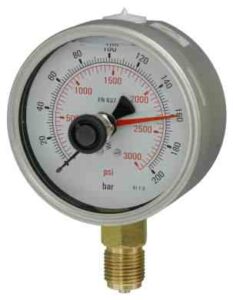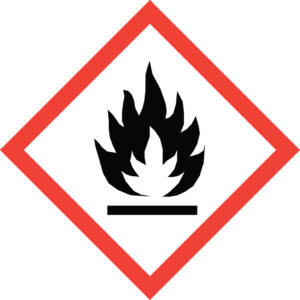Let us help you make sense of PSM / RMP!
My friend Brian Chapin will be offering an open-enrollment PSM/RMP class in Burleson, Texas, July 8th to 11th, 2025. Brian is an absolute pro in NH3 Refrigeration Process Safety. Anyone who attends will also get a FREE membership to SAFTENG. You can get more information on the class with this link.
CLICK HERE to Renew your Membership
CLICK HERE for a NEW Membership
CLICK HERE to see eligibility requirements for FREE Membership
If you have any questions, please contact m
SAFTENG has:
- Over 18,000 categorized unsafe acts/conditions and accident/injury photos
- Over 1,500 ppt's & doc's in the SAFTENG Library
- Over 4,000 Technical Articles on Process Safety, Emergency Response & OSH topics
- Over 450 videos (those not allowed on YouTube Channel)
Many THANKS to my NEW Members and those who CONTINUE to support SAFTENG:














January 18, 2025
On February 7, 2017, an employee, 50, was making preparations to replace the relief valve of a 1,000-gallon ammonia (NH3) tank. The incident investigation reported that the tank was empty of liquid NH3. However, it contained approximately 80 psi of vapor pressure. The employee set up a 30-gallon drum that contained water and affixed it to the nurse tank by way of a hose. He then turned the relief valve...
Read More
January 18, 2025
At 8:30 a.m. on May 24, 2018, Employee #1, 45, set up a booth representing the control laboratory for a safety day event at the plant, which involved approximately 1,000 employees, visitors, and vendors. Employee #1 wanted a fog effect at the booth to attract visitors. Employee #1 made plans to have coworker #1 get dry ice for the effect. When coworker #1 could not get dry ice, coworker #1 asked coworker...
Read More
January 18, 2025
I talk a lot about “safe locations” when we discuss Pressure Relief Device (PRD) discharge. The phrase “safe location” is used in just about every PRD RAGAGEP; however, none of them DEFINE or QUANTIFY the phrase, leaving it open to some poor designs. Here is a case where two workers were doing work 30′ under a Rupture Disc discharge. On January 15, 2022, Employee #1 and...
Read More
January 18, 2025
We have discussed this many times: far too many employees fail to recognize the proper application of “pounds per square inch” (PSI). In my LOTO training, I spend 15 minutes explaining that even 1.0 PSI can be lethal. This case was brought about by poor planning and a LOTO failure, but it shows that even low PSI can be lethal. On March 25, 2003, two employees were instructed to remove a...
Read More
January 18, 2025
On July 14, 2009, Employees #1 and #2 were performing a pneumatic test to verify leak tightness of a new pipeline meter station. The test medium was nitrogen gas, and the system being tested included piping and two (2) pressure vessels. Numerous leaks were found in the system during the test. The system reached the required test pressure of 2225 psig at approximately 3:25 p.m., and Employee #1 observed...
Read More
January 18, 2025
At 3:00 a.m. on February 19, 2020, Employee #1, 30, was using a torch to “dry” his shirt after spilling isopropanol on it. The employee’s shirt caught on fire, and the employee picked up the shirt in an attempt to extinguish the flames. The employee started to spin the shirt in his left hand and, in the process, caught the back of his pants on fire. The employee was doing this action...
Read More
January 18, 2025
On July 23, 2020, an employee, 30, was looking into a vessel being filled with chemicals, including Isopropyl alcohol, to ensure the level of the mixture was above the blades before turning on the mixers. The access port was mounted with one bolt so the employee could rotate the cover to look in. The employee turned on a small flashlight and was looking into the access port when a chemical explosion...
Read More
January 18, 2025
On July 12, 2024, an employee, 74, at a campground resort was attempting to add sodium hypochlorite to a bulk supply container to recharge the swimming pool. The employee added sodium hypochlorite to a container of sulfuric acid and was overcome by the vapors generated by the mixture. The employee was killed due to the inhalation of chlorine gas vapor generated by the mixture. … HomeRead More...
Read More
January 18, 2025
On July 13, 2024, Employee #1, 41, entered a manhole to tape piping in preparation for pouring concrete inverts. Shortly after entry, a coworker stationed topside observed that Employee #1 appeared pale and profusely sweating. When asked, Employee #1 indicated difficulty breathing. As Employee #1 attempted to climb the steps to exit the manhole, he experienced a medical incident, lost consciousness,...
Read More
January 18, 2025
The Facility is a colloidal and polymer blend manufacturing facility. The Facility has used Epichlorohydrin and Dimethylamine to manufacture chemicals on site since at least 1999. The Facility maintains a maximum inventory of 235,000 pounds of the regulated toxic substance Epichlorohydrin, as determined under 40 C.F.R. § 68.115, which exceeds the threshold quantity of 20,000 pounds of Epichlorohydrin...
Read More
January 18, 2025
I have limited experience with this method of isolating piping, but it is fairly often used to isolate large-diameter piping. OSHA’s investigation found that a drainpipe cleaning and maintenance company could have prevented an explosion at a Port Saint Lucie worksite in June 2024 that claimed a 24-year-old worker’s life by implementing proper safety measures to address the hazards of inflatable...
Read More
January 15, 2025
The termination of the rulemaking is effective January 15, 2025.
Basis for Terminating the Rulemaking
…
HomeRead More »
Read More



















